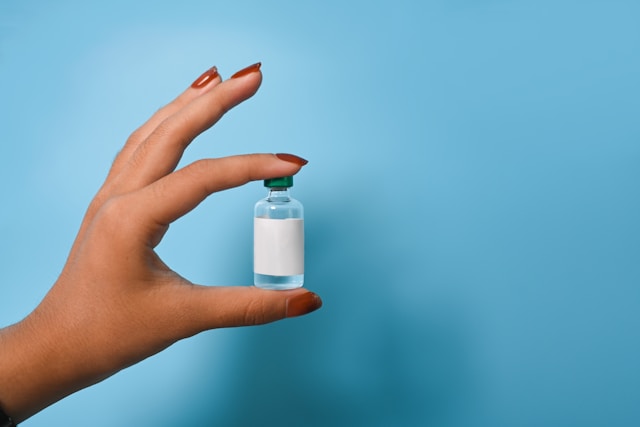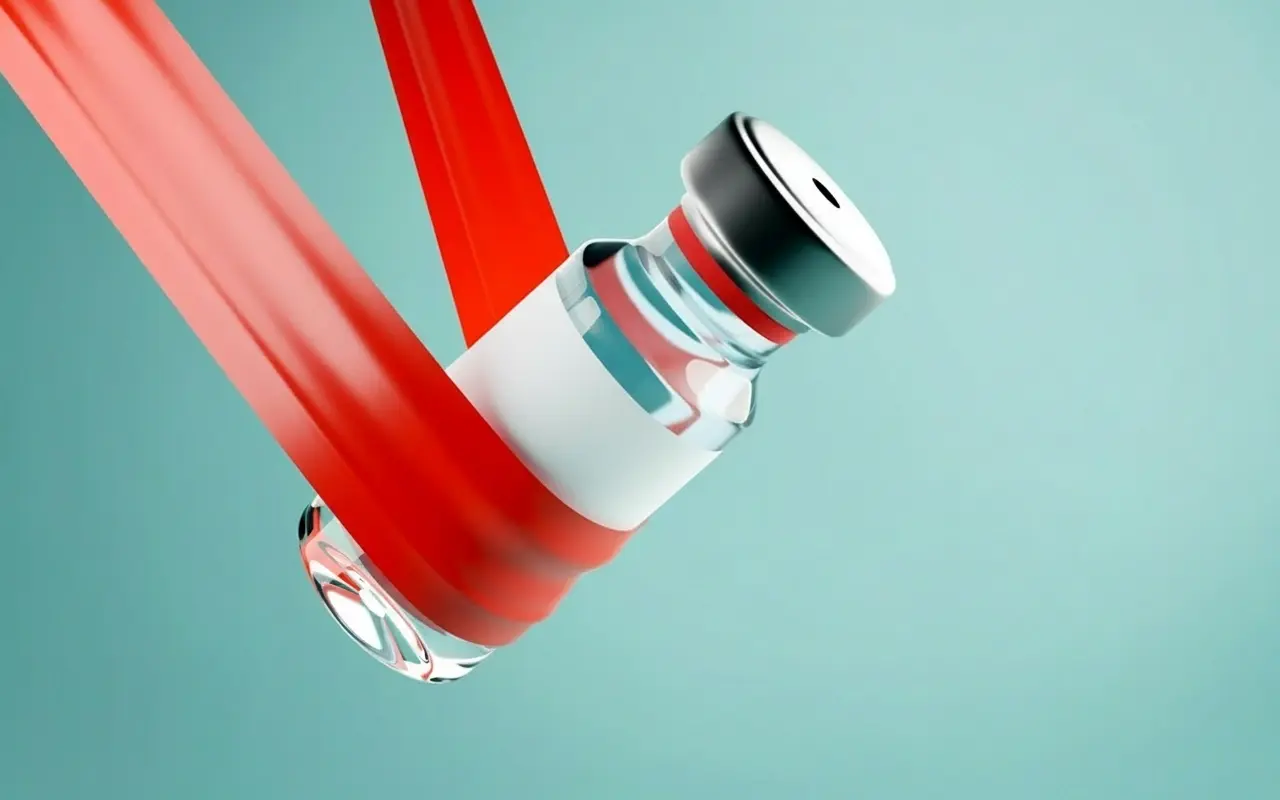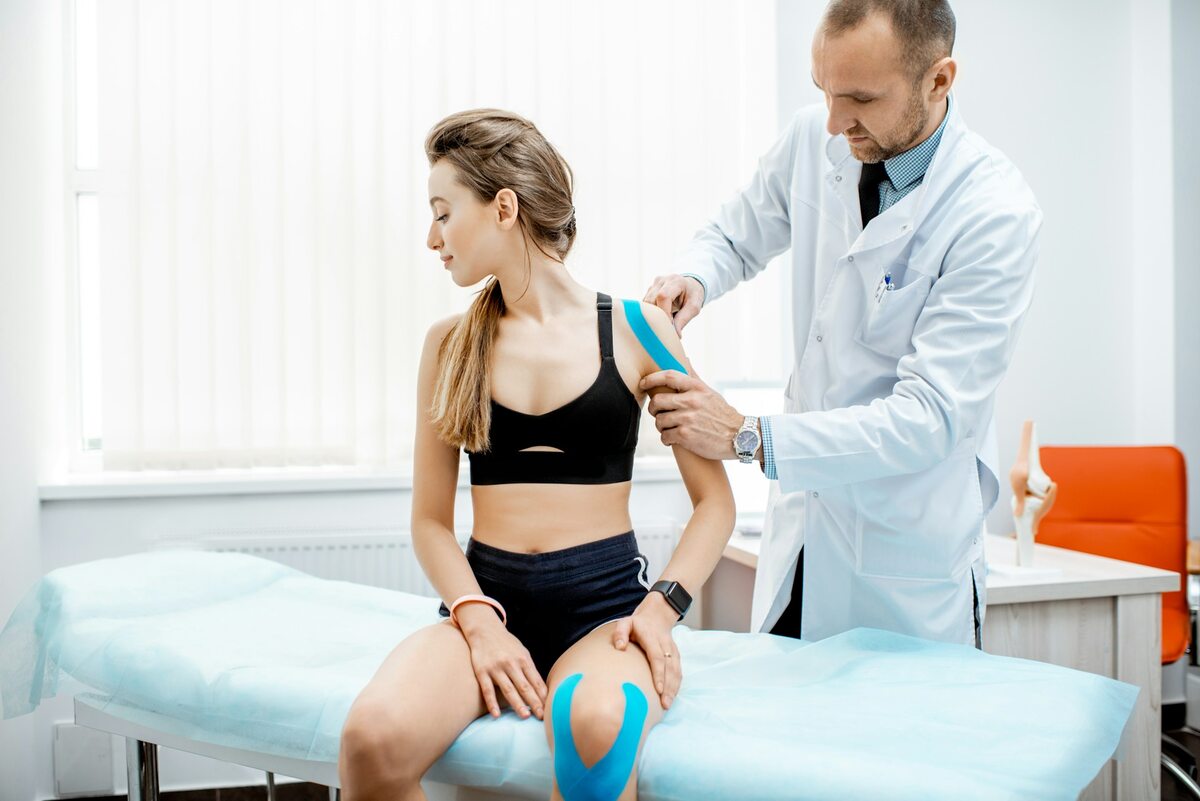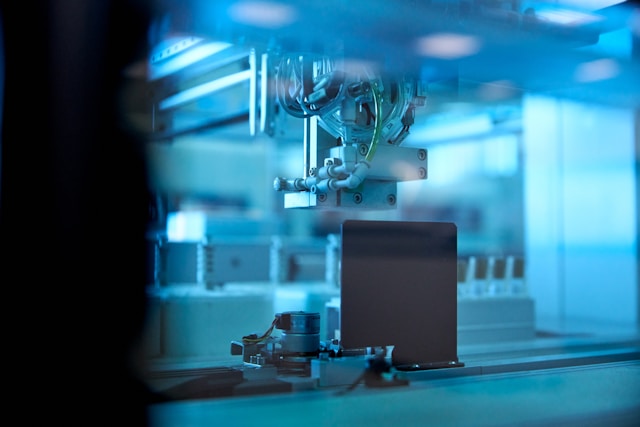This article is for informational purposes only and does not constitute medical advice. Always consult with a qualified healthcare provider before considering any peptide therapy.
Walk into any forum dedicated to peptide therapy, and chances are, you’re going to see two peptides mentioned a lot: TB4 and TB-500. The majority of people assume these peptides are one and the same. They are not.
Yes, the two are related but they are also different in structure, clinical backing, and even availability. TB4 is the full-length, naturally-occurring peptide that is produced in your body. TB-500 is a synthetic peptide that is comprised of only a small fraction of the larger molecule.
The differences between these two may matter to you if you are interested in using peptide therapy for injury recovery, tissue repair, or as part of an anti-aging protocol.
Quick Takeaways
- TB4 is a naturally occurring 43-amino acid peptide in human cells. TB-500 is a synthetic 7-amino acid fragment that is only positions 17-23 of TB4
- TB4 has been shown in clinical trials to increase wound healing by 42-61% and to decrease dry eye symptoms by 35-59%. There are no human clinical trials for TB-500
- Neither TB4 or TB-500 are FDA approved for medical use. TB-500 was de-listed as a compoundable drug by the FDA in September 2024
- Both peptides work through actin-binding mechanisms that promote cell migration, reduce inflammation, and support tissue repair
What Are TB4 and TB-500?
TB4 (Thymosin Beta-4) is found in nearly all cells in your body except for red blood cells. This naturally occurring peptide is 43 amino acids long, and has a molecular weight of ~4,982 daltons.
Cells naturally contain TB4 at concentrations of ~149 μM in immune cells. TB4 makes up 70-80% of beta thymosin in your tissues[1].
TB-500 is not TB4. It is a synthetic peptide that is 7 amino acids long (LKKTETQ). The molecular weight of TB-500 is 888.49 daltons. It is a fragment of the actin-binding domain of TB4.
TB-500 can be thought of as a truncated form that has been engineered to retain some of the regenerative properties of the full molecule, but is more stable for production.
How Do These Peptides Work?
Both peptides bind to actin. This protein makes up about 10% of the total protein mass in cells. This binding has implications for cell structure, motility, and migration.
The Actin Binding Mechanism
TB4 and TB-500 bind directly to G-actin (globular actin) monomers and keep them in this state, preventing them from polymerizing into F-actin. Published in the Journal of Biological Chemistry, it is shown that TB4 “binds actin monomers stoichiometrically and maintains the bulk of the actin monomer pool in metazoan cells.”[1]
This activity of TB4 creates a pool of stored actin that can be used on demand when a cell needs to reorganize its structure or move. TB4 binds to ATP-bound actin with 50-fold greater affinity than ADP-bound actin.
Beyond Actin Regulation
TB4 promotes healing through multiple pathways:
- Accelerates cell migration to injury sites
- Promotes new blood vessel formation (angiogenesis)
- Reduces inflammatory signaling molecules (IL-1β, IL-6, IL-8, TNF-α)
- Decreases programmed cell death
- Increases production of extracellular matrix proteins
Dr. Hynda Kleinman, whose laboratory at the National Institutes of Health conducted pioneering TB4 research, noted that “these data demonstrate an additional mechanism by which TB4 may promote wound repair.”
Third-Party Tested, 99% Purity
Order lab-verified peptides from our top recommended vendor.

What Does Clinical Research Show?
The evidence for TB4 spans human trials in wound healing, eye conditions, and heart health. TB-500 research relies mostly on animal studies or extrapolation from TB4 data.
Wound Healing Results
A Phase 2 clinical trial examining pressure ulcers produced measurable results[2]. TB4 treatment showed 42% improvement in re-epithelialization compared to saline at day 4. By day 7, improvement reached 61%.
The trial also found an 11% greater improvement in wound bed preparation for TB4-treated patients.
For venous stasis ulcers, mean healing times were 39 days with TB4 versus 71 days for placebo, though the small study size prevented statistical confirmation.
Eye Health Applications
A randomized, double-blind Phase 2 trial tested 0.1% TB4 ophthalmic solution (RGN-259) for dry eye disease. Results showed eye discomfort decreased by 35.1% in the TB4 group. Corneal fluorescein staining improved by 59.1%.
Dr. Gabriel Sosne at Wayne State University’s Kresge Eye Institute stated: “The electrifying possibility of Tβ4 as a revolutionary novel dry eye therapy is something that could have only been dreamed about just a few years ago.”[3]
Phase 3 trials for dry eye and neurotrophic keratopathy remain ongoing.
Heart Health Evidence
Clinical reviews covering TB4 trials in cardiovascular health found the peptide could “protect and repair the heart in patients with acute myocardial infarction.”[4] A pilot study using TB4 to prime stem cells in acute heart attack patients showed improved exercise capacity and heart function without major adverse effects[5].
Animal Study Data
Preclinical evidence includes:
- 61% faster muscle injury healing in mice
- Reduced infarct size following heart attacks[6]
- Enhanced blood vessel formation[7]
- Accelerated healing in diabetic and aged animal models[8]
TB-500 vs TB4: Which Is Better?
The straightforward answer: TB4 has substantially more clinical validation. TB-500 research in humans remains limited. While proponents claim various TB-500 benefits, most evidence derives from TB4 studies or animal research.
| Feature | TB4 (Thymosin Beta-4) | TB-500 |
|---|---|---|
| Structure | 43 amino acids, ~4,982 Da | 7 amino acids (LKKTETQ), 888.49 Da |
| Origin | Naturally occurring in cells | Synthetic fragment |
| Human Clinical Trials | Multiple Phase 2/3 studies | Minimal human data |
| FDA Status | Orphan drug designation (not approved) | Removed from 503A compounding list |
| Wound Healing Evidence | 42-61% improvement vs placebo | Extrapolated from TB4 studies |
| Eye Health Evidence | 35-59% symptom reduction | None |
Bioavailability Questions
TB-500’s smaller size theoretically provides better bioavailability due to its compact structure and N-terminal acetylation. Actual human bioavailability data remains scarce.
Oral administration of either peptide shows poor absorption. Most therapeutic applications use subcutaneous or topical routes.
TB-500 vs BPC-157
Both TB-500 and BPC-157 peptides appear frequently in regenerative medicine protocols and stacks. Their strengths differ:
TB-500 excels at:
- Muscle tissue repair
- Cardiovascular recovery
- Systemic anti-inflammatory effects
- Wound healing
BPC-157 shows superiority for:
- Gastrointestinal healing
- Tendon-to-bone attachment
- Ligament repair
- Localized tissue effects
Many practitioners combine both peptides for comprehensive injury recovery. This stacking approach may provide complementary benefits for severe tissue damage.
What About Safety and Side Effects?
A phase 1 safety study found TB4 “well tolerated even at higher doses with no dose limiting toxicities” in healthy volunteers[9].
Common Side Effects
Most users experience minimal issues:
- Injection site reactions (redness, swelling, tenderness)
- Mild, transient fatigue or headache
- Rare instances of mild hypotension or dizziness
Cancer Concerns
Some researchers raised theoretical concerns about TB4’s potential role in tumor metastasis and angiogenesis. Expression of TB4 associates with accelerated wound healing but also with angiogenesis induction.
Other studies suggest possible tumor suppressive effects, with decreased TB4 expression correlating with poor prognosis in multiple myeloma[10]. The relationship remains incompletely characterized.
Quality Control Issues
A pressing safety consideration involves peptide purity in unregulated markets. The FDA cited “a lack of human trials and the risk for immune reactions and peptide impurities with injectable Thymosin Beta 4.”
Research peptide suppliers operating outside FDA oversight may provide products of variable quality. Contamination risks exist when purchasing from unverified sources.
Regulatory Status: Can You Get These Peptides?
Neither TB4 nor TB-500 currently holds FDA approval for human therapeutic use. Understanding peptide legality helps clarify the complex regulatory landscape.
TB4 Status
Thymosin Beta-4 received FDA orphan drug designation for treatment of neurotrophic keratopathy in 2013. It has not received approval for this indication despite ongoing clinical trials.
TB-500 Ban
In September 2024, the FDA removed “Thymosin Beta-4, Fragment (LKKTETQ)” (TB-500) from the list of bulk drug substances compoundable by pharmacies under 503A regulations. This action restricts access to compounded TB-500 preparations.
Individuals still encounter TB-500 marketed as “research peptides” through online suppliers. These products lack FDA oversight and quality assurance.
Veterinary Use
TB-500 sees widespread application in equine medicine for treating soft tissue injuries and promoting recovery in racehorses. The International Federation of Horseracing Authorities and Federation Equestre Internationale prohibit its use in competitive settings.
The Bottom Line
TB4 and TB-500 represent related but distinct compounds with different levels of scientific support. TB4 is the full-length, naturally occurring peptide with emerging clinical evidence for wound healing, eye health, and tissue repair. TB-500 is a synthetic fragment with theoretical benefits but minimal human validation.
Dr. Allan L. Goldstein, Professor at George Washington University and widely recognized discoverer of the thymosins, noted that “Thymosin β4 thus provides a new target of opportunity for cancer researchers seeking to understand how cancer cells subvert host responses to facilitate metastasis.”[11] This highlights both the promise and complexity of these peptides.
The strongest human evidence exists for topical and ophthalmic TB4 applications, with pressure ulcer healing improving 42-61% over placebo and dry eye symptoms reducing 35-59%. Absence of FDA approval means both peptides remain investigational. Quality control, regulatory status, and theoretical long-term safety concerns warrant medical supervision and careful consideration before use.
Frequently Asked Questions
What is another name for Thymosin Beta-4?
Thymosin Beta-4 has multiple synonyms in the scientific literature and in clinical practice. It is often abbreviated to TB4, Tβ4, or thymosin β4. The peptide also has a variety of brand names it goes by, including RGN-259 (ophthalmic) in clinical trials. It is sometimes referred to as the “actin-sequestering peptide” by researchers due to its predominant mode of action. All of these names correspond to the same 43 amino acid naturally occurring peptide in human cells.
Is Thymosin TB-500?
No, they are not the same thing. TB4 refers to the full-length peptide that is produced in the human body naturally. TB-500 refers to the synthesized peptide, which is a fragment containing only 7 amino acids from the TB4 sequence (17-23). It is a short, but homologous sequence, in which it mimics the actin-binding site region of the full-length TB4 peptide. While their mechanisms of action are partially shared, TB4 has a lot more clinical evidence behind it than the synthesized fragment, and pharmacologically, it is not the same compound.
Does TB-500 help with hair growth?
Current research does not support TB-500 for hair growth applications. While TB4 plays roles in cell migration and tissue repair, no peer-reviewed studies demonstrate hair regrowth or prevention of hair loss with TB-500 treatment. The peptide’s mechanisms focus on wound healing, inflammation reduction, and tissue regeneration in injured areas. If you’re seeking peptide-based approaches for hair, other compounds have more relevant research backing their use for this specific application.
References
- Cassimeris L, Safer D, Nachmias VT, Zigmond SH. Thymosin beta 4 sequesters the majority of G-actin in resting human polymorphonuclear leukocytes.. Rockefeller University Press; 1992. https://doi.org/10.1083/jcb.119.5.1261
- Malinda KM, Sidhu G, Mani H, Banaudha K, Maheshwari R, Goldstein A, et al. Thymosin beta4 accelerates wound healing. Journal of Investigative Dermatology 1999;113 3:364–8.
- Sosne G. Thymosin beta 4 and the eye: the journey from bench to bedside. Informa UK Limited; 2018. https://doi.org/10.1080/14712598.2018.1486818
- Xing Y, Ye Y, Zuo H, Li Y. Progress on the Function and Application of Thymosin β4. Frontiers Media SA; 2021. https://doi.org/10.3389/fendo.2021.767785
- Zhu J, Song J, Yu L, Zheng H, Zhou B, Weng S, et al. Safety and efficacy of autologous thymosin β4 pre-treated endothelial progenitor cell transplantation in patients with acute ST segment elevation myocardial infarction: A pilot study. Elsevier BV; 2016. https://doi.org/10.1016/j.jcyt.2016.05.006
- Bao W, Ballard VL, Needle S, Hoang B, Lenhard SC, Tunstead JR, et al. Cardioprotection by systemic dosing of thymosin beta four following ischemic myocardial injury. Frontiers Media SA; 2013. https://doi.org/10.3389/fphar.2013.00149
- Philp D, Goldstein AL, Kleinman HK. Thymosin β4 promotes angiogenesis, wound healing, and hair follicle development. Elsevier BV; 2004. https://doi.org/10.1016/j.mad.2003.11.005
- Kleinman HK, Sosne G. Thymosin β4 Promotes Dermal Healing. Elsevier; 2016. https://doi.org/10.1016/bs.vh.2016.04.005
- Wang X, Liu L, Qi L, Lei C, Li P, Wang Y, et al. A first‐in‐human, randomized, double‐blind, single‐ and multiple‐dose, phase I study of recombinant human thymosin β4 in healthy Chinese volunteers. Wiley; 2021. https://doi.org/10.1111/jcmm.16693
- Cha HJ. Role of Thymosin 4 in Tumor Metastasis and Angiogenesis. Oxford University Press (OUP); 2003. https://doi.org/10.1093/jnci/djg100
- Goldstein AL. Thymosin 4: A New Molecular Target for Antitumor Strategies. Oxford University Press (OUP); 2003. https://doi.org/10.1093/jnci/djg126







